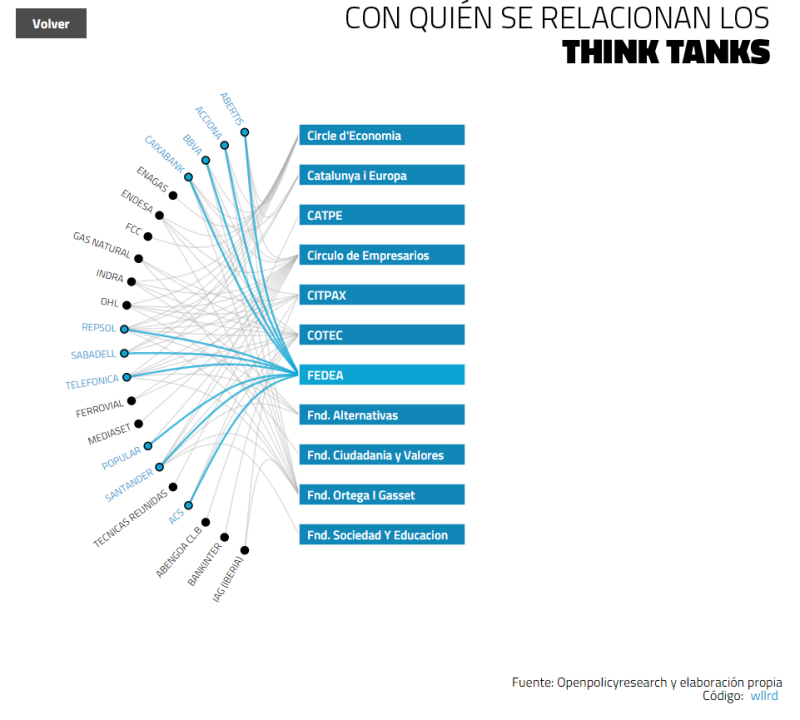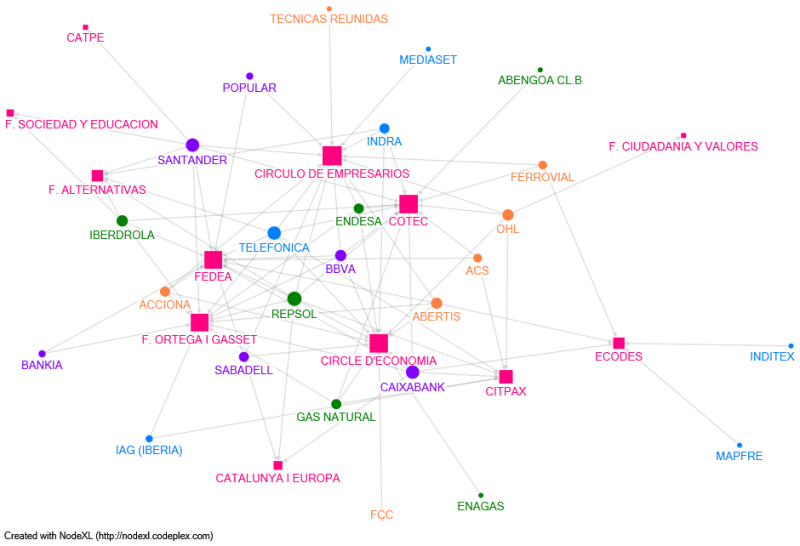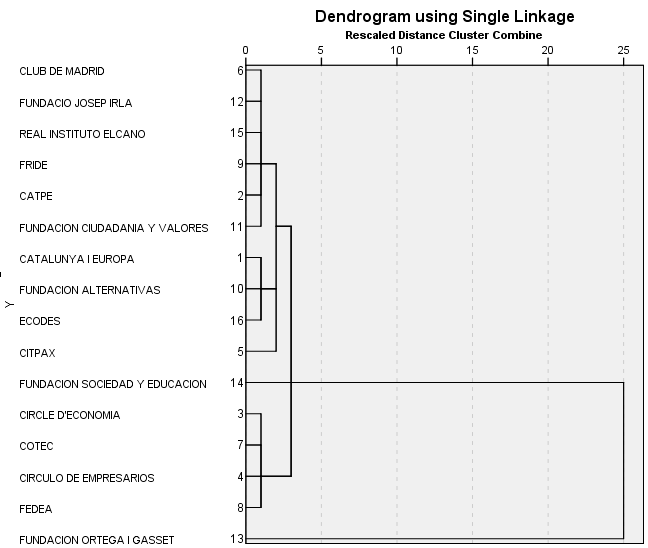Right Moves, Jason Stahl’s new book, explains how Americans debate policy through the history of conservative think tanks. This post contains a brief review of the book and an interview with the Author.
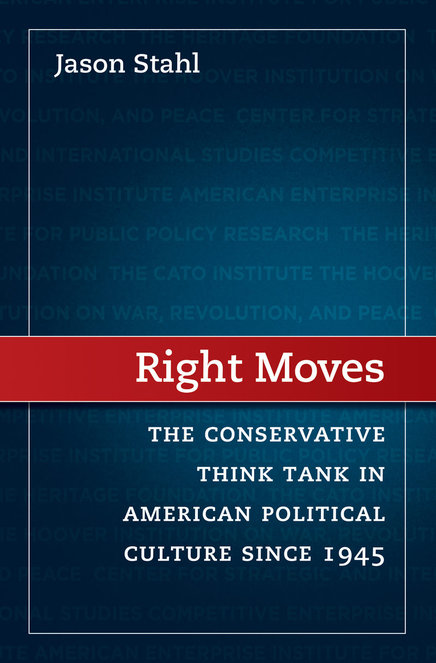
The Review
Right Moves examines the history of conservative think tanks and their impact on the market of ideas in America. When I first heard about it, I wondered what it would add to the existing scholarship on think tanks. Many experts have effectively recognized how the appearance of new players like the Heritage Foundation and the Cato Institute transformed the field of public policy expertise. If until then Brookings had been the model of what a think tank should be in its research operations and modes of influence, with the arrival of Heritage nonpartisanship (or the appearance of nonpartisanship) was relegated from a mandatory to an optional approach, and a weaker one for that matter: advocacy tanks with major investments in rapid production and marketing of ideas first obtained the favor of the Reagan administration and then took the lead in the nineties, transforming once and for all the idea of what a think tank should do to seek relevance. Goodbye books, welcome briefs.
In some way or another, this fundamental change has been recognized and analyzed by all major experts, be them historians like James Allen Smith, think tank scholars like James McGann, practitioners like Kent Weaver, political scientists like Andy Rich or sociologists like Thomas Medvetz. In fact, the thesis that the advent of this new model of conservative organization displaced the academic production of liberal thinkers, especially of those working in universities, can be found in Smith’s 1993 book The Politics of Expertise and became central in Medvetz’s 2012 Think Tanks in America. So why this book?
Stahl explains how the apparently innocuous notion of the market of ideas became an deological weapon: conservative ideologues’s ideas became respectable because they were conservative, not because they were sound and rigorous.
As I soon found out, Stahl’s book is important because it combines historical accuracy with a cunning look at the development of a concept that may seem natural nowadays but has transformed American policy debates from their root: it is the notion of a market of ideas, which justifies the acceptance of conservative proposals for the sake of ideological balance against dominating liberalism in the progressive era. The author makes a great job at explaining how that apparently innocuous notion became the best ideological weapon, how leading ideologues propagated ideas that were worth of consideration because of their ideological stamp, and not because of their soundness or rigor. What’s more: the book shows how think tanks’ contribution to that notion had a tremendous influence in Washington DC over time. In other words, under Stahl’s thesis the rise of Heritage and Co. not only displaced the notion of what a good think tank should do ––it shifted the perception of what is a valid ideological position, and what type of arguments can enter into a serious policy debate.
The rise of conservative think tanks shifted the perception of what type of arguments can enter into a serious policy debate
Stahl’s approach is very close to the ground: as a historian, he has dived into archives and reconstructed fundamental moments in the genealogy of the current think tank scene. He follows a number of policy debates very closely -on supply side economics, on welfare reform, on the momentous aggressive foreign policy that was already being elaborated before 9-11. Most of those moments describe what are usually considered conservative shops: the consolidation of the American Enterprise Institute, the ascent of the Heritage Institution in the eighties and its symbolic triumph as Alma Mater of the scores of conservatives that were sent to administer Iraq after the 2003 invasion. But what makes Right moves even more important for contemporary readers is its explanatory power regarding the fate of liberal organizations and of the Democratic Party. Instead of serving as a liberal counterbalance to the new forces, the Brookings Institution moved to the right in search of a new center that could be perceived as devoid of bias; and the Democratic Party as a whole moved to the right under the ideological influence of the Democratic Leadership Council and the Progressive Policy Institute, referred to with the unified acronym DLC/PPI throughout the book, which sought to establish a new liberal orthodoxy for Bill Clinton’s presidency under the term New Democrat. That move to the right marginalized the leadership of Jesse Jackson, more solidly aligned with traditional liberal values that connected with the civil rights movement.
The interview
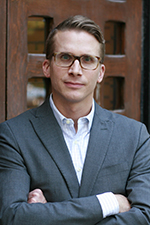
Question: What’s the origin of this book?
Jason Stahl: This book was the topic of my dissertation, although it’s different in the final product. It is part of my work during the last six years, since 2009 to last year.
Q: What is your specific contribution to the existing literature? Some scholars, for example Rich or Medvetz, have already devoted attention to the importance of conservative think tanks.
JS: With this book I am really making a contribution to two big bodies of research. The one that you mention, with Medvetz and Rich as more recent representatives, is certainly one body. The other body has studied conservatism in America. And the specific approach of my contribution can be seen in my training as a historian, which is reflected in how I combine the two themes. I am talking with the tools of a historian, going to the archives and reconstructing institutional development through those sources. Other scholars have used very different methods. They are sociologists or political scientists concerned with how think tanks operate in the present. They conduct interviews and do ethnographic work. In any case, looking at conservative think tanks as sole point of inquiry is new in both literatures.
Looking at conservative think tanks as sole point of inquiry is new in both the literatures on think tanks and on conservatism
What are the think tanks that you analyze in the book?
There are two groups: the most prominent conservative think tanks that most would name, and I mean AEI, Hoover, Heritage and Cato. They are the most prominent, and they all have a place in the book, especially AEI and Heritage.
But another important part is the interrelationships with think tanks that existed before, and of course Brookings is the most important here. These conservative centers established their brands in counterposition with Brookings or borrowing from them in what is a very dynamic process. Especially because, if you look at the development of Brookings over time, it starts out as progressive technocratic, but then in the 1930s it becomes an anti-New Deal endeavor, and it was perceived as being strongly associated with big business. That doesn’t switch until the early 1950s under the umbrella of postwar technocratic liberalism. What I argue in the book is that they reoriented themselves again in the 70s, in large part because of how conservatives reacted to them and to what was perceived as a liberal bias of the postwar consensus, which had had the effect of marginalizing conservative views. So Brookings’ response was to deny their liberal bias with very eloquent gestures that portrayed them as balanced: they brought in a new Republican president and conservative scholars. This dynamic continues to this day. By design, they have been very good at constantly reinventing themselves, shifting, reading the moment of where they needed to be to have the most influence.
Q: What is the role of foundations in this period?
JS: In the 1970s, foundations became a solution for conservative think tanks. The idea that they were fundamentally biased impeded their influence, so initially, between 1970 and 1975, it was a very big solution to say: no, we’re not funded by GE or other corporate funders, but by foundation XYZ, which is more likely to be perceived as a neutral institution that funds research. An example of such funders is John Merrill Olin: an oil business man, Olin decided to start his own foundation in order to funnel money to political projects.
On the other hand, AEI’s Bill Baroody was able to obtain support from the Ford Foundation in spite of the fact that it was viewed as biased towards by suggesting that they needed a more balanced portfolio. For the Ford Foundation, supporting AEI could lend them an aura of neutrality!
Q: What is the key takeaway of this book?
I really want this book to speak to different audiences, both to academics and to a larger public. And I think it’s also very important to have a recognized narrative for this important part of our recent history. These institutions have had an enormous effect on the way Americans debate policy today, and the book can help understand how that frame came to life. Basically, by framing policy debates as a market place, conservatives were able to validate the need of particular types of conservative voices. On the longer run, this strategy has relativized policy debate, has lent enormous new power for conservatism, and has altered how Americans understand the way political arguments happen.
Conservative think tanks have had an enormous effect on the way Americans debate policy today, and the book can help understand how that frame came to life.
Q: Does your book contain any recommendations for the future?
JS: Well, this way of debating policy is just with us. At this point, there might be a need for a broader market of policies. Until now we haven’t had a broad market place, but just a balanced market place. We have two voices, instead of the many possible voices. What we can do is allow for an actually broader marketplace. It’s true that those voices may exist but lack resonance on the mainstream platforms, and on what is heard in Washington; but the media fragmentation that we’re seeing may be signaling to a change in that direction.
Q: We are experiencing a fascinating and transformative election year. How do you think the conservative movement may change in the future?
With AEI positioning itself as an anti-Trump institution and Heritage starting to assume a pro-stance, we can see an interesting institutional split this year.
JS: I think you’re right, one hears so often that we’re in front of a timely transformation that then doesn’t happen, but I think this time we’re seeing a fascinating shift in the primaries towards candidates that don’t fall within the voices that I was mentioning. And it’s interesting to see how different think tanks are positioning themselves in the primary process. What will Heritage do? It seems to me like they are starting to assume a pro-Trump position. So we can see an institutional split, because AEI is working hard to position itself as a Republican anti-Trump institution.
Follow the Jason Stahl on twitter: @stahljason



